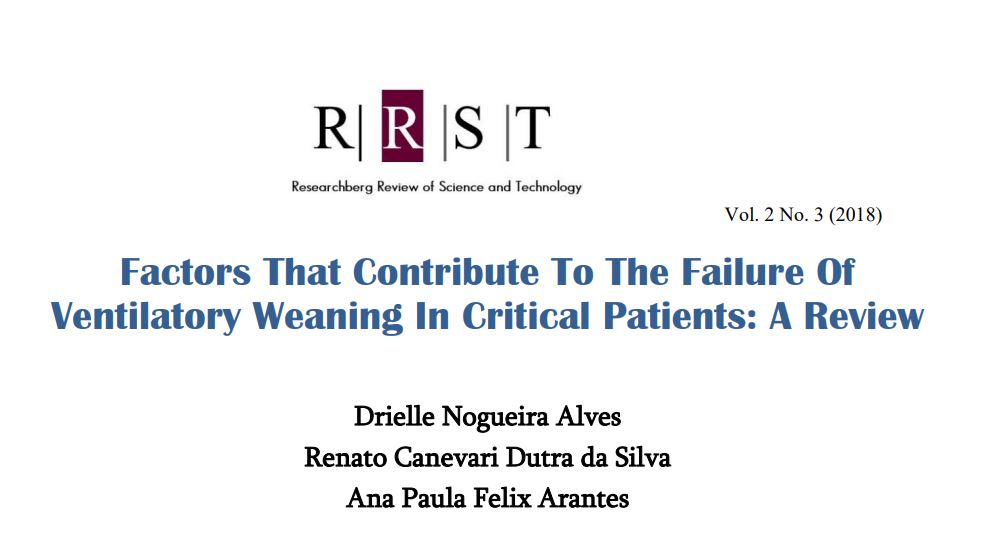Factors That Contribute To The Failure Of Ventilatory Weaning In Critical Patients: A Review
Keywords:
mechanical respirator weaning, mechanical ventilation, interactive ventilatory supportAbstract
Mechanical ventilation aims to replace spontaneous breathing with artificial respiration, inflating the airways with volumes of air and generating pressure within the lungs. Weaning from ventilation should occur as early as possible. It can be performed slowly, gradually, using several techniques, among which the following stand out: the T-Tube technique, synchronized intermittent technique and pressure support technique. This study aims to verify, through literature review, the main factors that contribute to the failure of ventilator weaning in critically ill patients. For this purpose, a literature review of the last twenty years was carried out, except for classic literature relevant to the topic, researched on the sites: Medline , Scielo , Lilacs , Pubmed and Literatures of the IESRIVER faculty library, using the terms: “weaning mechanical ventilation” and “factors that predispose to weaning failure”. It can be shown through this study that factors such as age, fatigue, muscle atrophy, cardiac dysfunction, nutritional factors, advanced age, emotional factors and prolonged mechanical ventilation are factors that can lead to failure during an attempt at weaning. Most studies concluded that the T-tube technique is the most effective, since it is quite simplified and allows the patient to have periods of effort and rest, which improves muscle strengthening and guarantees successful weaning, but it is up to each team to decide the best method to be used, always giving priority to the patient.

Downloads
Published
How to Cite
Issue
Section
License
Copyright (c) 2018 ResearchBerg

This work is licensed under a Creative Commons Attribution-NonCommercial-NoDerivatives 4.0 International License.




